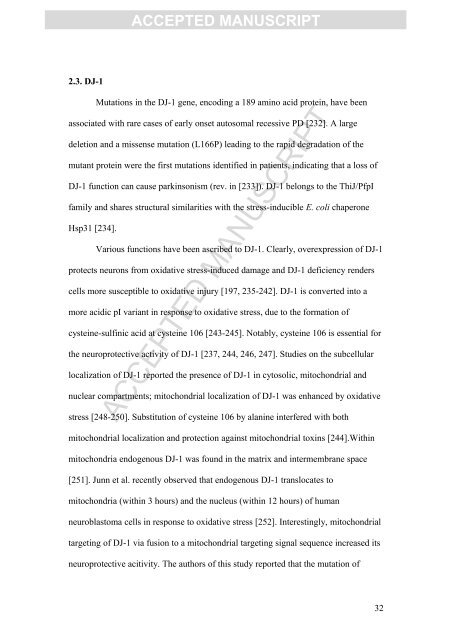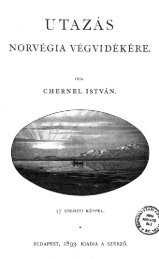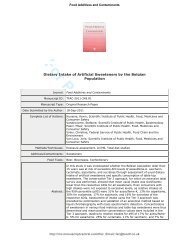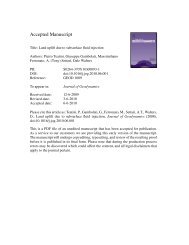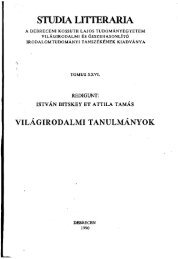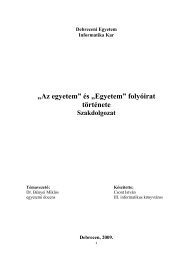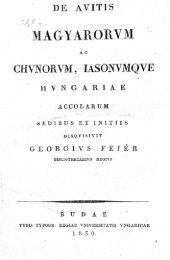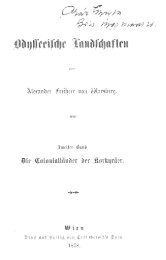accepted manuscript
accepted manuscript
accepted manuscript
Create successful ePaper yourself
Turn your PDF publications into a flip-book with our unique Google optimized e-Paper software.
2.3. DJ-1<br />
ACCEPTED MANUSCRIPT<br />
Mutations in the DJ-1 gene, encoding a 189 amino acid protein, have been<br />
associated with rare cases of early onset autosomal recessive PD [232]. A large<br />
deletion and a missense mutation (L166P) leading to the rapid degradation of the<br />
mutant protein were the first mutations identified in patients, indicating that a loss of<br />
DJ-1 function can cause parkinsonism (rev. in [233]). DJ-1 belongs to the ThiJ/PfpI<br />
family and shares structural similarities with the stress-inducible E. coli chaperone<br />
Hsp31 [234].<br />
Various functions have been ascribed to DJ-1. Clearly, overexpression of DJ-1<br />
protects neurons from oxidative stress-induced damage and DJ-1 deficiency renders<br />
cells more susceptible to oxidative injury [197, 235-242]. DJ-1 is converted into a<br />
more acidic pI variant in response to oxidative stress, due to the formation of<br />
cysteine-sulfinic acid at cysteine 106 [243-245]. Notably, cysteine 106 is essential for<br />
the neuroprotective activity of DJ-1 [237, 244, 246, 247]. Studies on the subcellular<br />
localization of DJ-1 reported the presence of DJ-1 in cytosolic, mitochondrial and<br />
nuclear compartments; mitochondrial localization of DJ-1 was enhanced by oxidative<br />
ACCEPTED MANUSCRIPT<br />
stress [248-250]. Substitution of cysteine 106 by alanine interfered with both<br />
mitochondrial localization and protection against mitochondrial toxins [244].Within<br />
mitochondria endogenous DJ-1 was found in the matrix and intermembrane space<br />
[251]. Junn et al. recently observed that endogenous DJ-1 translocates to<br />
mitochondria (within 3 hours) and the nucleus (within 12 hours) of human<br />
neuroblastoma cells in response to oxidative stress [252]. Interestingly, mitochondrial<br />
targeting of DJ-1 via fusion to a mitochondrial targeting signal sequence increased its<br />
neuroprotective acitivity. The authors of this study reported that the mutation of<br />
32


